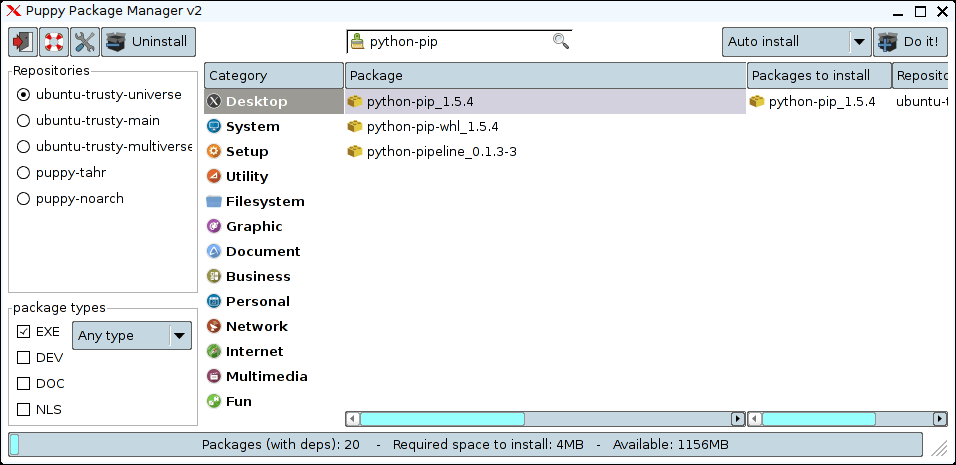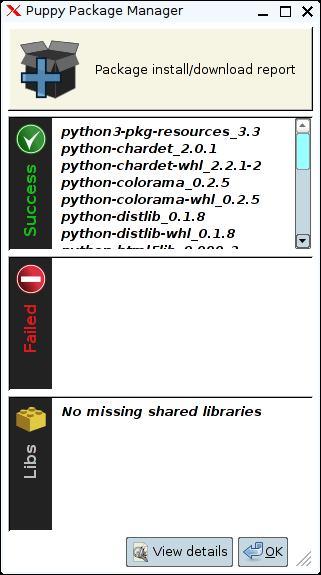How To install Shadowsocks on Puppy Linux Tahrpup
As you may know, Shadowsocks is a secure, very lightweight, super fast Socks5 proxy, originally designed to bypass the great firewall of China. You can also view it as an alternative to VPN. In this tutorial, I will show you how to install Shadowsocks command line client on Tahrpup which is an official distribution of Puppy Linux.
Install Shadowsocks on Puppy Linux Tahrpup
Open Puppy package manager by clicking Menu > Setup > Puppy Package Manager. Then enter python-pip in the search box. Select python-pip_1.5.4 and click Do it! button on the upper-right corner.

A little window will pop up showing the installation details.

Once the installation is complete, another window will appear. If nothing is in the Failed section, then the installation is successful. Click the OK button.

After python-pip is installed, we can use pip to install shadowsocks. Open a root terminal window and issue the following command to install shadowsocks.
pip install shadowsocks

Creating a Shadowsocks Configuration File
Before starting the Shadowsocks command line client, we need to create a json-formatted config file. Run this command in the terminal.
nano /etc/shadowsocks.json
Then put the following text in the file. Replace server-ip with your actual server IP and replace your-password with your preferred password. Make sure you have installed and configured a Shadowsocks server.
{
"server":"server-ip",
"server_port":8000,
"local_address": "127.0.0.1",
"local_port":1080,
"password":"your-password",
"timeout":600,
"method":"aes-256-cfb"
}
Save and close the file. Then start the client using command line.
sslocal -c /etc/shadowsocks.json
To run in the background:
sslocal -c /etc/shadowsocks.json -d start
If you want to know how to set up a Shadowsocks server, check out the following post. You can also buy Shadowsocks service from Shadowsocks service providers.
Setup Your Own Shadowsocks Server On Debian, Ubuntu, CentOS
That’s it! I hope this article helps you install Shadowsocks on Puppy Linux. Comments, suggestions and questions are always welcome.


